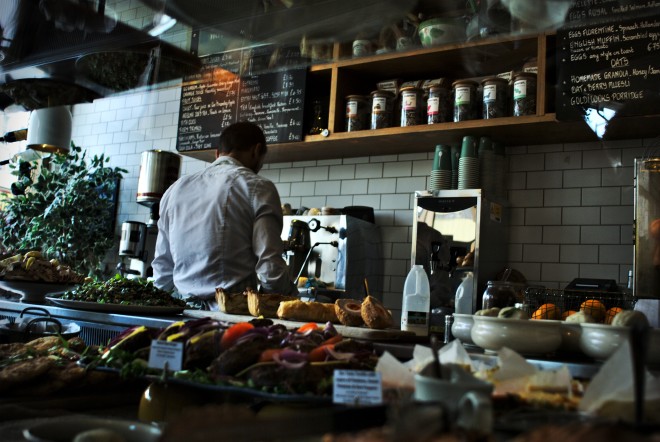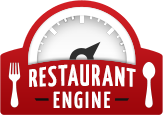What Is In A Star – Michelin Star That Is

The Michelin star is the hallmark of quality when it comes to fine-dining worldwide.
Michelin is for tires, right? Well, yes, but it’s much more than that.
A Michelin Star is the pinnacle of awards a restaurant can receive. It means they are the best of the best. (tweet this)
Today we take a peek inside the Michelin Guide. We ask the question, “What is in a star – the Michelin star that is?”
Before we look at the meaning of a one, two and three Michelin Star rating, let’s look at the history of the Michelin Guide.
The Michelin Guide
First, it’s good to know that Michelin is a French tire manufacturer based in Clermont-Ferrand in the Auvergne region of France. It is one of the three largest tire manufacturers in the world along with Bridgestone and Goodyear.
Famous for its Michelin Man, the company is also known for its Red and Green travel guides, road maps and the Michelin Stars we’re going to talk about today.
The Michelin Stars are awarded in the Red Guide to restaurants for the food and dining experience.
Michelin brothers, Ándre and Édouard, started the Michelin Guide in 1900, just 11 years after they started their tire company.
Why did they start the guide? They wanted to provide people with a ratings guide for hotels and restaurants because they thought that would make drivers use up their tires quickly and need to purchase a new set.
At the turn of the 20th century, there were just 2,200 cars in France with gasoline in limited supply. The Michelins wanted to change public perception of vehicles from something you took out on the weekend for your Sunday picnic into a long-distance mode of transportation.
They gave out their guides all over France, even putting up road signs to assist travelers.
Soon, they released guides throughout Europe and started charging for them.
In 1926, the star system had expanded into fine dining and began with the dining star. In 1931, they introduced the three-star system.In 1931, the system expanded to add the second and third star.
The definition of stars was firmly established by 1936 as we know it today.
The Importance of the Michelin Star
Restaurants awarded the Michelin Star are recognized for succeeding at the highest level. Their chef must be of the top-most quality.
If a restaurant receives one star, that’s super, two stars, and the restaurant is great. If a restaurant gets three stars, people know that the restaurant is a destination worth visiting.
Now available in 24 countries, the guide is revered for its critics, the inspectors.
Who is the Inspector?
The Michelin Star inspectors remain anonymous and are prohibited from speaking to the press.
They are commonly former chefs with an extensive background in the culinary arts. Inspectors must also pass official Michelin Guide training in France.
They don’t take notes while eating, and they often return to restaurants several times before deciding on a rating.
The Michelin stars are different from Zagat and Yelp since they come from these anonymous, experienced reviewers or inspectors. Zagat and Yelp rely on consumer feedback on the Internet.
The Michelin Guide inspectors are solely responsible for rating restaurants.

Chefs worldwide dream of earning a star in the Michelin Guide.
The Michelin Stars
If a Michelin inspector visits your restaurant, you can expect to be awarded 0-3 stars depending on the following criteria:
- Quality and consistency of the food
- Mastery of technique and the personality of the food
The actual definition of what they are looking for is a closely-guarded Michelin secret. While some believe the ambiance, service and décor count, a recent three-star awardee serves at a wooden counter in a car park.
When it comes to the actual star ratings, they are as follows:
- 1 Star: Very good restaurant in its own category. (“Une très bonne table dans sa catégorie”) The food is consistently prepared to high standards, and the restaurant is worth your while. (“Table excellente, mérite un detour”)
- 2 Stars: Excellent cooking and worth a detour. The cuisine is high-quality and skillfully prepared.
- 3 Stars: Exceptional cuisine and worth a special trip. Superb and distinctive dishes are executed to near perfection using the best and freshest ingredients. (“Une des meilleures tables, vaut le voyage”)
Another award given out by Michelin is the Bib Gourmand. This is for quality food at a value price. For example, you might find a restaurant in New York City offered this award for a meal that costs $40 or less and includes two courses, plus wine and dessert.
The Rising Star is also another category, originally created to denote one or two star restaurants being considered for two and three stars in the next year.
Recently, the Rising Star has been extended to apply to new restaurants likely to be starred in the next evaluation. The purpose is to let your restaurant know you have a chance so you put in some extra effort.
Most restaurants receive no Michelin Stars at all. This is what makes restaurants covet the rating. (tweet this)
As an example, the Michelin Guide for Chicago in 2014 included 500 restaurants: one received three stars, four received two stars, and 20 received one star. Everyone else – zero.
Who Earns the Rating?
Have you ever wondered who the Michelin Star belongs to – the restaurant or the chef?
It turns out it belongs to the restaurant. The food and chef are certainly vital to the Michelin Star, but the restaurant retains the rating.
Some people even think the customer service, ambiance and experience are taken into consideration as well, although this isn’t a proven fact.
Final Thoughts
So, is a three-star Michelin restaurant really worth it? One food critic says indeed it is.
Her feelings about her dining experience are summed up in this statement, “With an unforgettable wining and dining experience so unique and original, diners will remember the meal for decades to come.”
Plus, we believe your diners are willing to pay more for food with stars. In today’s digital world, imagine the marketing power of being a Michelin-rated restaurant.
Diners would flock to your restaurant not only for the experience and the food, but to post their experience on social media to share with the world.
We’ll leave you with one final thought…
Can you imagine receiving a phone call that goes a bit like this: “Bonjour, this is [name] with Le Guide Michelin. We’re calling to tell you that your restaurant will be included as a Bib Gourmand, Rising Star, One Star, Two Star, Three Star in the next Michelin Guide for your city.”
Wow. Just wow.
You want the Michelin inspectors to find your restaurant online. Take control of your online marketing today. Take a tour of Restaurant Engine and launch your restaurant website this weekend!
We build responsive, mobile-friendly restaurant websites with dynamite online menus. Contact us today for your free website consultation. We are here to help you update your website and stand out in the crowd so you can stay ahead of your competition and grow your positive online presence with your restaurant website.
Images: Ali Inay and Joanna Boj


Leave a Reply